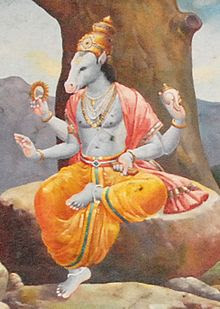 |
| Devanatha Swamy temple, near Cuddalore, TN cuddalore.nic.in |
 |
| Devanatha Swamy temple, near Cuddalore, TN cuddalore.nic.in |
Among the Indian states, next to Karnataka, Tamil Nadu has the largest number of Hindu temples and invariably countless of them were built centuries ago by the dynasties of Chola, Pandya, Pallava and Vijayanagara and Hoysala . Mostly built in typical Dravida style architecture, each one has immense historical value. Most of them are dedicated to various forms of Vishnu and in the case of Shiva temples go by different names because Shiva has no avatar. Construction of temples was based on Vasthu Sastra and with respect to norms of worship temples of great antiquity follow Agama Sastras. The Devanatha Swamy temple dedicated to Sri Vishnu at Thiruvanthipuram, Cuddalore District, Tamil Nadu is a unique one. Here the worship of Hayagriva is popular, particularly among school and college going students.
At the Devanathaswamy temple (also called Thiruvanthipuram Kovil) in Thiruvanthipuram, a village close to Cuddalore , Tamil Nadu the main deity is Devanathaswamy and his consort is Lakshmi as Hemabhujavalli. This temple just like Sri Ramar temple near Thanjavur at Mariamman Kovil has a separate shrine for Hayagriva, God of knowledge, an avatar of Vishnu. One of the 108 Divyadesam shrines, this temple follows Vadakalai sampradayam and the temple rituals and pujas are held according to the traditional norms of Vaikashasana Agama. Here, the primary deity Devanathaswamy is believed to have appeared before Adisesha (the sacred serpent of Vishnu), sage Markandeya and Hindu god Indra. Thirumangai Azhwar and Divya Kavi Pillai Perumal Aiyangar in his Ashta Prabanda sang in glory of the primary deity.
Built during the Medieval Cholas, with later expansion from Pandyas, Hoysala Empire and Vijayanagara Empire. The temple has countless inscriptions suggesting contribution from Kulothunga Chola I (1070–1120), Vikrama Chola (1118–1135), Rajaraja Chola III (1216–1256), Jatavarman Sundara Pandyan (1251–1268), Vikrama Pandya, Vira Pandya III, Vijayanagar king Achyuta Deva Raya and others. (1529–1542 CE).
 |
| Devanatha swamy temple, Cuddalore. tripadvisor.com |
Brahmanda Purana, Naradiya Purana and Skanda Purana made a mention of this temple. A group of sages wanted to know the sacred divinity of God Vishnu. Their visits to places like Thiruparkadal, Vaiunta did not get the needed results. Having searched so many places at last they located a place where sage Markandaya and his daughter Bhudevi were busy mediating on God Vishnu. They could see Mahavishnu/ Empiron in all his splendor and dazzling beauty with his his weapons Sudarshana (wheel), Panchajanya (conch) and Kaumodaki gracing his arms.
 |
| Thiruvanthipuram, near Cuddalore, TN mapsofindia.com |
Legend Has it God Vishnu had his mount Garuda (Eagle vahana) bring the holy water (theertham) from lake Vraja Theertha in the neither world. It was secretly established by the sage. Upon seeing Garuda taking water from the lake, the sage was in rage and turned the water impure. Garuda then explained to him about his mission as ordered by God Vishnu. As considerable time was lost due to arguments between garuda and the learned sage, Vishnu asked Adishesha to get pure water from the earth through a hole by whipping his tail. The temple ''offerings'' or Prasadams are prepared using the water from the ancient well.
 |
| Hayagriva Bronze idol. bronzesofindia.com |
 |
| Hayagriva image in Khajuraho Lakshamana Temple wikipedia . |
 |
| Mythological image of Hayagriva. en.wikipedia.org |
This temple, historically speaking, is the only temple in South India to have a separate shrine for Hayagriva, an avatar of Vishnu with horse face. Hayashirasura has two wiked horses, named Madhu and Haitaba, are said to have taken the Vedas away from the world. Helpless Brahma approached Vishnu to retrieve the vedas. Vishnu took the form of Hayagriva, the god of knowledge and wisdom, and at last restored the Vedas to Brahma. Tradition has been that students taking important and difficult exams make a beeline to the Hayagriva shrine and offer prayers with devotion. Invariably, most of them pass out successfully. Headwork, good preparation, faith in God and devotion collectively play a role here.
 | ||
| Sri Vedanta Desikan, (1268–1369) |
Vedanta Desikar sang in praise of Hayagriva in his works Belonging to Vadakalai sect he was associated with the temple for a pretty long time (he lived to be more than 100 years) and composed many works in Sanskrit and Tamil. Sanskrit, work: namely Devaneya Panchasat and Achuta Sataka and Tamil works: Mummanikovai, Ammanai, Oosal, Aesal, Navamanimalai, etc.
Located on the foothills of Outshadagiri, a small hill, close to the river Gadilam (Uttaravahini) this temple has a shrine of Lakshmi- Hayagriva. Built in Dravidian architecture, the temple faces East and the access to the temple is through west Gopuram (tower). Besides the main deity Devanathaswamy in the Srikovil/ sanctum there other stone images of consort, Senkamalavalli Thayyar (also known as Hemabhujavalli, Vaikunta Nayagi and Amruthavarshini) in sitting posture. Utchavar (processional deity) in the sanctum goes by different names - like Bhuvaraghia oruvan, Achuta, Dvistantha,etc
A temple tower was erected during the reign of Koperunjinga, It was during the reign of Maravarman Sundara Pandyan the worship norms were established. The descendants of Ramanuja were given special provisions for worship during the period of Vijayanara Empire.
Twelve-day Brahmotsavam is a famous temple festival celebrated during the Tamil month of Chittirai (April - May). Rathotsavam, the temple car is drawn during the ninth day of the festival. Masi Mahotsavam is yet another ten-day festival during the Tamil month of Masi (February - March). During the festival, the festival image is taken in procession to the seashore in Cuddalore. Other festivals like Krishna Janmashtami, Karthigai, Tamil New Year, Margazhi ten-day festival, Sankaranthi, Panguni Uthiram and Rohini Utsavam are held here. . The temple is a renowned pilgrim center and devotees turn up here in large number.
The flag-staff - Dwajasthambam in this temple is a unique one. The shrine dedicated to sri Vedanta Desikar also has a separate Dwajasthambam,
https://en.wikipedia.org/wiki/Devanathaswamy_temple









